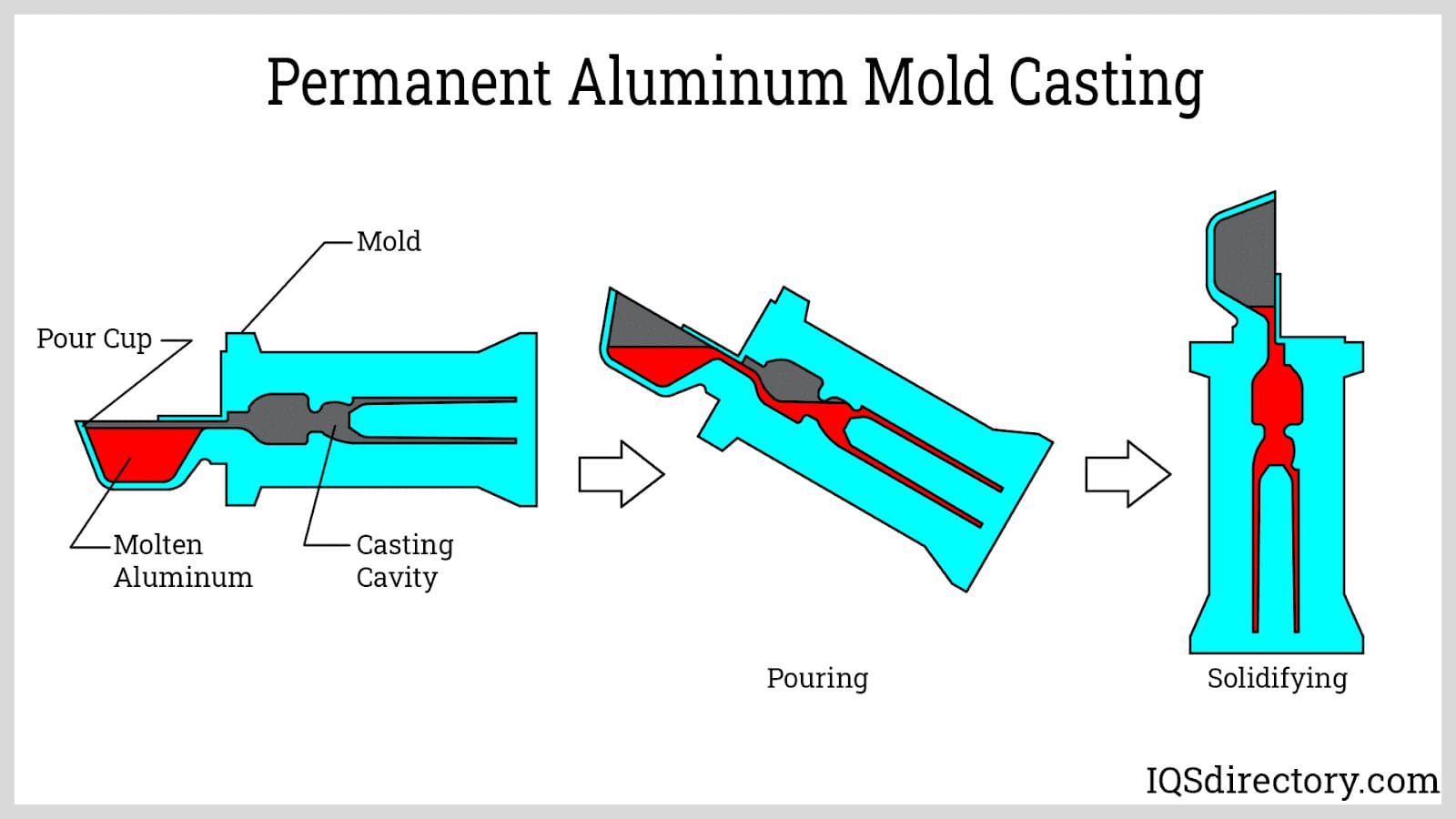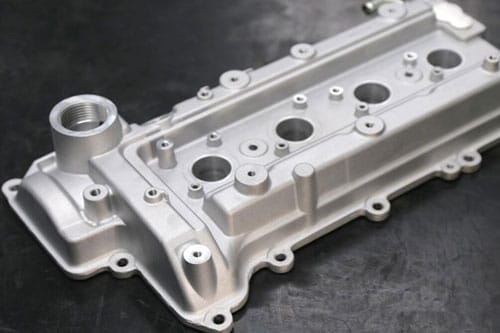How Metal Castings shape innovation in different industries
The Many Uses of Aluminum Castings: A Comprehensive Overview for Market Professionals
Aluminum castings play an important duty across different sectors, many thanks to their unique homes. These long lasting and light-weight elements are vital in automotive and aerospace applications. Understanding their advantages and the manufacturing procedures entailed can substantially impact efficiency and performance. As innovation breakthroughs, brand-new developments proceed to emerge. Industry experts should take into consideration these aspects to make informed options. The implications of these advancements deserve exploring better.
Benefits of Light Weight Aluminum Castings in Different Industries
Aluminum spreadings supply countless advantages across different markets, making them a recommended option for lots of applications. Among the key advantages is their lightweight nature, which contributes to total power performance in transportation and equipment. This lowered weight also improves simplicity of taking care of and installment, causing lower labor costs.
Light weight aluminum castings display excellent corrosion resistance, extending the life expectancy of parts in harsh atmospheres. Their thermal and electric conductivity enables efficient warmth dissipation and effective electrical applications.
In addition, aluminum can be quickly alloyed and controlled, making it possible for the production of complex forms and layouts that meet details design requirements. This flexibility sustains innovation in sectors such as automotive, aerospace, and durable goods.
The recyclability of aluminum aligns with sustainable techniques, making it an eco pleasant alternative for contemporary production. In general, the benefits of aluminum spreadings place them as important materials in numerous sectors.
Key Manufacturing Processes for Light Weight Aluminum Castings
A selection of producing processes are used to develop light weight aluminum castings, each customized to meet specific application needs and production volumes. Amongst the most usual methods are sand casting, die spreading, and investment spreading.

Investment casting, additionally understood as lost-wax spreading, supplies extraordinary surface coatings and complex information, usually made use of for smaller, precision elements. Additionally, gravity spreading makes use of the pressure of gravity to fill mold and mildews, appropriate for larger spreadings where accuracy is less essential. Each procedure has its benefits, accommodating diverse commercial requirements while taking full advantage of performance and top quality in aluminum casting manufacturing.
Applications of Light Weight Aluminum Castings in Automotive and Aerospace
In countless applications within the aerospace and auto industries, light weight aluminum spreadings play an important duty because of their lightweight properties and outstanding strength-to-weight proportion. In the vehicle market, parts such as engine blocks, transmission situations, and wheel edges are commonly produced utilizing aluminum spreadings. These parts take advantage of decreased weight, leading to boosted gas efficiency and improved efficiency.
In aerospace, light weight aluminum spreadings are necessary for structural elements, including aircraft frameworks, landing gear, and engine real estates. The product's resistance to corrosion and capacity to endure high temperature levels make it ideal for these requiring applications. Additionally, aluminum castings assist in complex geometries, enabling the design of detailed parts that add to general airplane effectiveness.
Technologies and Advancements in Light Weight Aluminum Casting Innovation
As industries continue to develop, innovations in light weight aluminum spreading technology are driving significant improvements in effectiveness and efficiency. Advanced strategies such as 3D printing and casting simulation software program have transformed conventional practices, permitting extra specific designs and minimized waste. These innovations enable manufacturers to produce intricate geometries that were formerly unattainable, boosting the see this website adaptability of aluminum spreadings.
Furthermore, the growth of brand-new alloy make-ups and therapy techniques has boosted mechanical residential or commercial properties, making castings lighter yet stronger. Automated procedures are also being integrated, reducing human mistake and increasing production speed.

Best Practices for Choosing and Utilizing Light weight aluminum Castings
When choosing and making use of light weight aluminum castings, cautious consideration of particular requirements can greatly affect the end product's performance and longevity. Sector experts need to examine the details application needs, including load-bearing capabilities, rust resistance, and thermal conductivity. Choosing the appropriate alloy is essential, as different alloys provide varying characteristics and strengths.
Furthermore, comprehending the spreading procedure-- whether sand spreading, pass away casting, or financial investment spreading-- will influence the end product's quality and cost-effectiveness. Quality assurance steps, such as non-destructive screening and dimensional examinations, are important to assure that the castings satisfy industry standards.
Appropriate handling and storage of aluminum castings can avoid damages, guaranteeing peak efficiency. Teaming up with reputable distributors who prioritize top quality control can enhance the reliability of the finished parts. By adhering to these finest techniques, industry specialists can maximize the advantages of light weight aluminum castings in their applications.
Often Asked Inquiries
What Are the Ecological Effects of Light Weight Aluminum Casting Manufacturing?
Light weight aluminum spreading production can result in significant environmental effects, including greenhouse gas discharges, power intake, and resource depletion. In addition, improper waste management might result in soil and water contamination, influencing local ecosystems and communities.
Exactly How Do Aluminum Castings Compare to Various Other Metal Spreadings?
Aluminum spreadings are lighter and corrosion-resistant compared to other metal castings like iron or steel. They use premium thermal and electric conductivity, making them excellent for applications where weight and durability are essential variables.
What Is the Price Difference In Between Light Weight Aluminum and Other Products?
The expense of light weight aluminum castings commonly varies from moderate to high, often a lot more budget friendly than stainless-steel but pricier than some plastic options. Metal Castings. Variables such as manufacturing product, quantity, and intricacy try this site requirements substantially affect general prices
Can Light Weight Aluminum Castings Be Reused?
Light weight aluminum castings can undoubtedly be reused. This process substantially reduces energy intake and ecological impact compared to producing brand-new aluminum, making reusing an important technique in promoting sustainability and resource conservation within numerous markets.
What Precaution Should Be Taken During Aluminum Spreading Processes?
During light weight aluminum casting processes, necessary safety and security steps include putting on safety equipment, making certain proper ventilation, using heat-resistant devices, preserving tools, and complying with safety and security protocols to protect against direct exposure to Visit Your URL dangerous materials and lower the danger of mishaps. (Wisconsin Aluminum Foundry)
Sand casting entails producing a mold from sand, permitting for huge castings and intricate forms. Financial investment spreading, likewise understood as lost-wax spreading, supplies phenomenal surface coatings and detailed information, often made use of for smaller, precision elements. Additionally, gravity spreading makes use of the force of gravity to load molds, appropriate for larger spreadings where precision is less critical. In addition, recognizing the spreading procedure-- whether sand spreading, die casting, or investment spreading-- will affect the last product's quality and cost-effectiveness. Light weight aluminum castings are lighter and corrosion-resistant contrasted to various other steel castings like iron or steel.